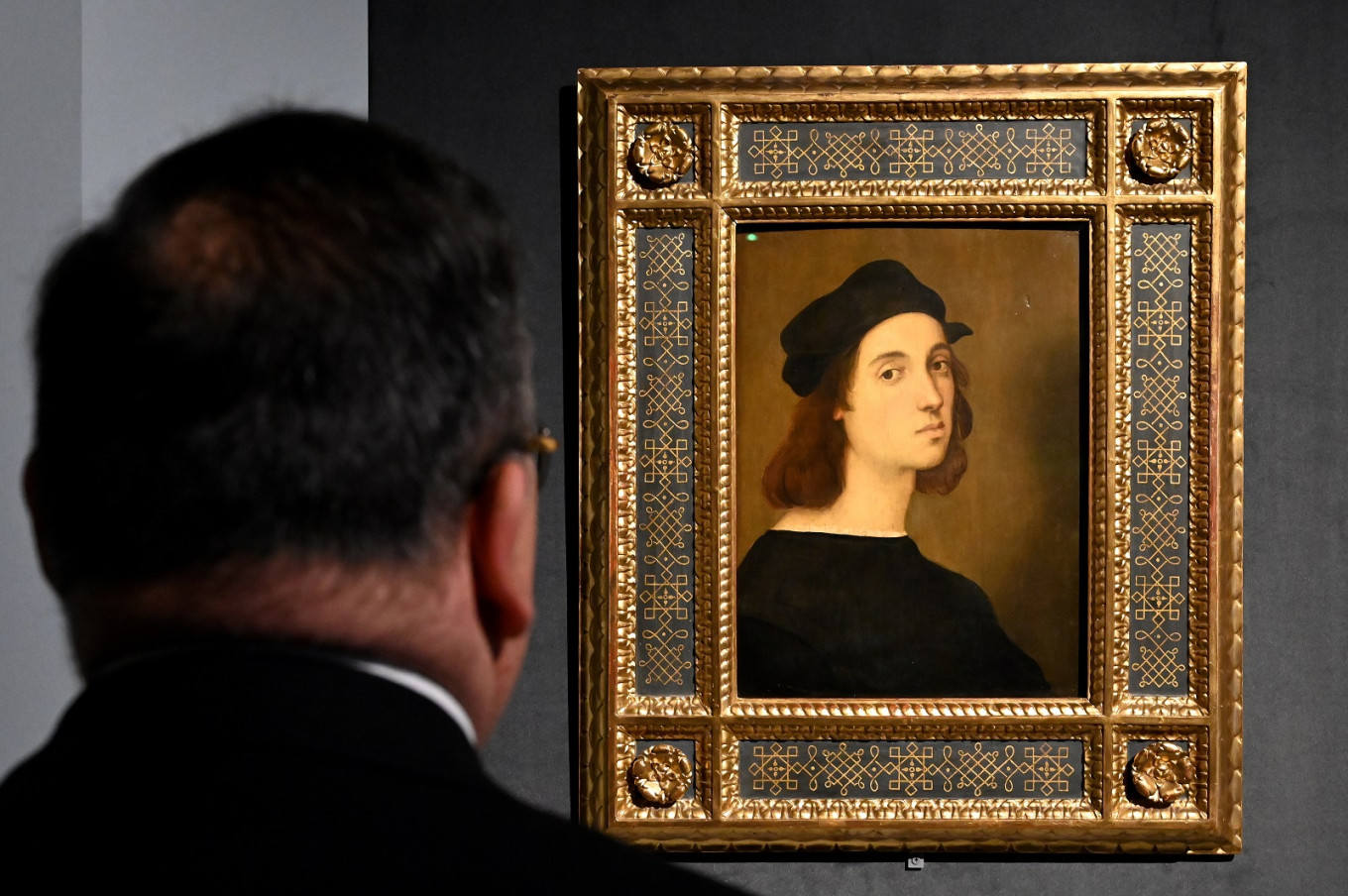Popular Reads
Top Results
Can't find what you're looking for?
View all search resultsPopular Reads
Top Results
Can't find what you're looking for?
View all search resultsRaphael's face reconstructed to solve tomb mystery
Art sleuths have created a 3D reconstruction of the face of Italian painter Raphael, solving an age-old mystery over his final resting place.
Change text size
Gift Premium Articles
to Anyone
A
rt sleuths have created a 3D reconstruction of the face of Italian painter Raphael, solving an age-old mystery over his final resting place, Rome's Tor Vergata University told AFP Thursday.
The artist, a child prodigy and part of a trinity of Renaissance greats along with Michelangelo and Leonardo da Vinci, died in 1520, aged only 37. A red rose graces his tomb in Rome's Pantheon all year round.
His body was exhumed in the 19th century, at which point a plaster cast of his skull was made. But experts were not sure the remains really belonged to Raphael, for the excavation also unearthed other full and partial skeletons.
Several of the skeletons belonged to the artist's students, but others went unidentified.
Popular myth has it that the Renaissance painter, who was said to have had an active sex life, succumbed to syphilis in 1520, though experts widely agree that he died of pneumonia, possibly after visiting lovers late on freezing nights.
As Rome marked 500 years since his death this year, the university team set about making a 3D reconstruction of the plaster cast.
It found a clear match with the Raphael pictured in portraits by other artists in the period, as well as the artist's self-portraits, molecular biology expert Mattia Falconi told AFP.
"We have concrete evidence for the first time that the skeleton exhumed in 1833 belongs to Raffaello Sanzio," Falconi said.
Read also: It wasn't the sex: Bloodletting fatal for Raphael, study claims
'Not his nose'
A 3D-reconstruction "only captures 80 percent of the original face, but there's no doubt about the result. It looks nothing like the students we know are buried there, and it would be too much of a coincidence for a stranger to look so similar".
Falconi said the only part of the face that could not be reconstructed this way were the ears -- "but fortunately Raphael had long hair that covered his ears".
Confirmation the skeleton is Raphael's opens the door to further analysis of the skeleton to determine hair and eye color.
A project to re-exhume the body this year was put on hold due to the coronavirus pandemic, but if it resumes Falconi said his team would be interested in seeing how faithful the artist was to his real self.
"The 3D model shows the eyes and mouth (in the portraits) are his, but he has been kind to himself about his nose," he said.
"We know that Raphael often painted himself younger than his years, and this model allows us to see him as he really was".
A life-size 3D-printed bust of the man dubbed the "Prince of Painters" by fellow artist and famed 16th-century biographer Giorgio Vasari will go on display at the museum at his birthplace in Urbino in Italy's Marche region.
Despite his premature death, Raphael produced a vast oeuvre of seminal work, much of it at the Vatican, whose opulent museums include several rooms filled with his frescoes.
Completed by Raphael's students after his death, they remain some of the Vatican's most popular rooms.











